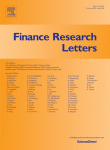Worldwide, the primary source of energy is derived from oil, succeeded by coal, gas, and hydroelectric power, despite the rapid growth of other renewable sources (Ritchie and Rosado, 2024). Consequently, the oil market holds significant importance in the global economy, serving as a vital energy source for households and numerous industries. Numerous nations heavily rely on oil as a significant import or export commodity, thereby establishing it as a crucial component of international trade (Lutz and Meyer, 2009). As a result, oil stands out as the most vital global commodity. In this regard, the principal determinant of uncertainty in the oil market is of immense importance for policymakers and investors globally. Economic factors with the potential to affect oil demand can determine the level of uncertainty in the oil market. Fluctuations in economic conditions, such as periods of growth or recession, have the potential to impact the oil demand (Ghosh, 2009). The uncertainty surrounding the worldwide economic landscape, encompassing worries about economic policies or financial instability, can shape anticipations regarding future oil consumption and contribute to the overall uncertainty in the oil market. Hence, to comprehend the primary mechanisms driving uncertainty in the oil market, one should meticulously assess macroeconomic indicators that more accurately reflect global economic conditions.
Prior studies have explored some elements contributing to uncertainty within the oil market. A body of research has concentrated on how uncertainty in economic conditions affects uncertainty in the oil market (Kisswani, 2021; Apostolakis et al., 2021; Lyu et al., 2021; Scarcioffolo and Etienne, 2021; Bakas and Triantafyllou, 2019; Mei et al., 2019; Wei et al., 2017). This line of research has emphasized the significance of macroeconomic uncertainty in the dynamics of oil price uncertainty. Another body of literature has examined the relationship between option-implied volatilities (uncertainties) in oil, currency, gold, and stock markets (Naeem et al., 2023; Li, 2022; Dutta et al., 2021; Ding et al., 2021; Liu et al., 2020; Antonakakis et al., 2020; Dimpfl and Peter, 2018; Maghyereh et al., 2016; Robe and Wallen, 2016). These studies generally suggest significant interactions among uncertainties in oil, currency, gold, and stock markets.
As for the connection between the US dollar and oil markets, the existing literature has predominantly focused on oil prices rather than oil market uncertainty when examining the role of the US dollar in oil market dynamics. Previous studies identify the US dollar as a key determinant of oil prices, emphasizing its safe-haven role and forecasting power during periods of turbulence in the oil market (Lin et al., 2016; Zhang et al., 2008; Dai et al., 2021; Ming et al., 2022; Schryder and Peersman, 2016). Some notable studies demonstrate a significant negative link between the US dollar and oil prices (Wen et al., 2018; Coudert and Mignon, 2016; Mo et al., 2018; Zhou et al., 2021; Akram, 2009). To gain a more comprehensive understanding, several studies employ causality approaches and time-dependent analyses to investigate the link between the US dollar and oil prices (Benhmad, 2012; Wang and Chueh, 2013; Reboredo et al., 2014; Albulescu and Ajmi, 2021; Wang et al., 2022). The findings of these studies generally suggest that the relationship between the USD exchange rate and oil price dynamics may vary depending on the time horizon. Overall, previous studies have focused their efforts on the primary transmission channels between the US dollar and oil prices. Oil market uncertainty has the potential to exert an adverse impact on various well-known economic indicators, such as aggregate output, durable consumption, and investment (Elder and Serletis, 2010). Therefore, it is essential to investigate the key drivers of oil market uncertainty to enhance the comprehension of market participants. In this regard, we shift our focus to another dimension of oil market dynamics, namely oil price uncertainty, in our research to address the significant gap in the existing literature.
Existing research has investigated certain macroeconomic figures and global market trends related to the dynamics of uncertainty in the oil market. The pricing and trading of oil occur in US dollars, meaning that changes in currency exchange rates can influence the costs associated with purchasing oil for countries utilizing diverse currencies. A body of research has scrutinized the dynamic link between the US dollar and oil prices. However, no research has yet examined the primary role of fluctuations in the US dollar in the uncertainty of oil prices. Our research attempts to enhance the related research landscape by evaluating the connection between the US dollar and uncertainty in oil prices. To accomplish this objective, we employ the CatBoost algorithm along with the Shapley Additive Explanation (SHAP) approach to improve the interpretability of the algorithm. The use of the SHAP procedure enables us to interpret the relative importance of the US dollar in predicting oil market uncertainty levels compared to other risk and uncertainty factors. One of the most important goals of utilizing the SHAP approach is to investigate which economic risk or uncertainty most significantly interacts with fluctuations in the US dollar. Our analysis provides useful insights to market participants regarding the main mechanism behind the shifts in oil market uncertainty.


